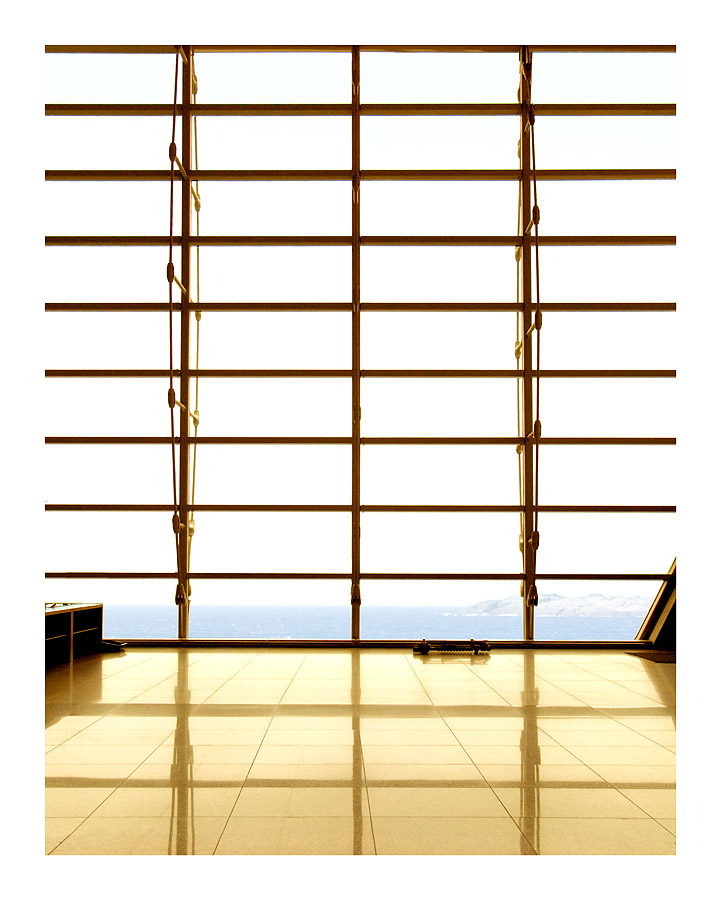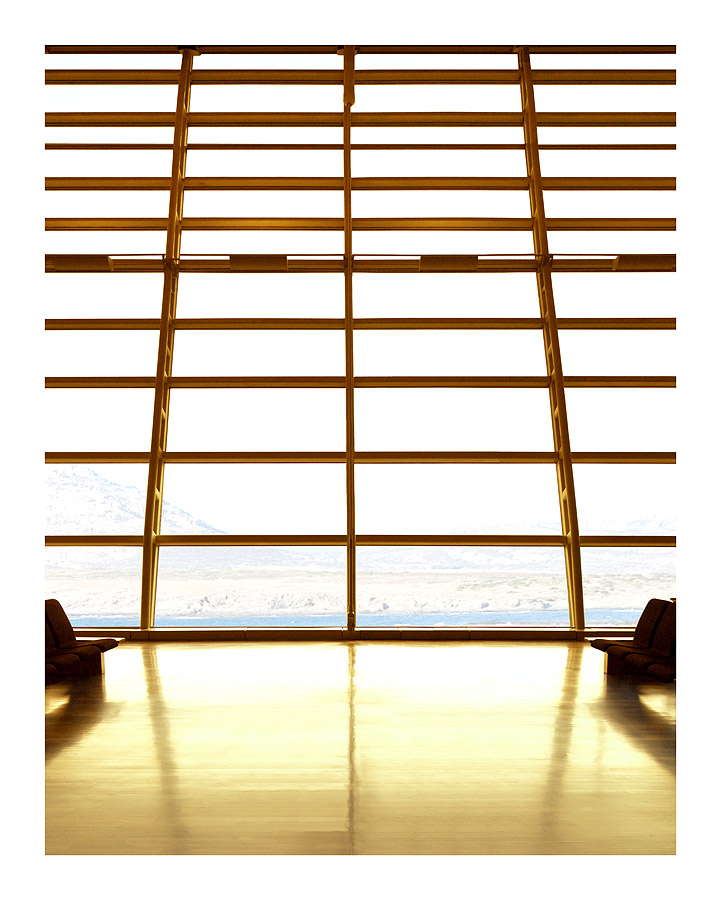Sar
The photographs from the new series Indoor, and still more so those from Salta, Seoul, and Sar, lack almost any characteristic elements; the differences between the photographs are limited to a few inconspicuous details. The photographs of the four series all have in common that they were taken in airports and offer views from the arrivals hall of the surrounding countryside. They show that Peters is not afraid to take photographs through reflective window panes— a difficult obstacle for most amateur photographers. Peters’s photographs, however, show no signs of light refraction or blurring of focus; the result is that the grid formed by the window frames becomes especially fascinating, dominating the foreground and standing out against the shiny floor. These grid structures form the coordinates of the image, both structuring it and stripping it of its realism, thereby bringing it closer to abstraction. Beyond these common elements, each series has its own specific qualities. Thus, for example, in Sar 1 and Sar 2 Peters put together two photographs he had taken separately, because the departure lounges of the two airports showed similar architectural details (pp. 156, 157). Since both the photographs with the upright and the tilting window frames are surrounded by a white edge, the glazing bars look natural and seem almost to float in space.
The series Salta 1–4 is based on individual photographs all taken in the same place, which Peters barely had to change (pp. 154, 155). He was inspired by the extraordinary constellation of colors and the linear layering of planes. The blue sky, the green lawn, the beige runway, and the wine-red surface of the floor fit into the black window frames’ system of coordinates in a way that produces an almost objectless image. The composition makes one think immediately of the artists of Constructivism or De Stijl (despite the fact that Piet Mondrian, for example, generally avoided green). In this series it becomes particularly clear that although an individual photograph can work by itself, a series is a better way of developing a basic idea. Astonishingly, Peters’s method of serial production comes close to meeting the definition of a cycle; a cycle being distinguished by the fact that its individual works revolve around a central theme, and its whole is more than the sum of its parts.
In the series Seoul, finally, Peters brings to a culmination the idea of photography that overcomes the factual object (pp. 158, 159). Here, too, he took photographs through window panes set in brown frames, but in so doing he brought the distant landscape up against the window frame, turning it into an abstract grid pattern that cannot be located in space. The pattern extends from the left- and right-hand sides of the image, where its more intense colors
actually cause it to achieve a higher degree of realism. The result is that it looks like it might continue beyond the picture frame. Three-dimensional form, depth, or space are entirely eliminated. On the other hand, the clever trick of smuggling photographs of cherry blossoms into the picture lends the entire composition a special charm. And it does so despite the fact that the blossoms seem to evaporate into indistinct, formless white surfaces. They offer, though, an additional indication that these works captured in tones of beige brown are to be understood as symbolizing the Asiatic world.
The Far East can be described as the thematic and intellectual focal point of this series. However, the photographs cannot be considered part of a cyclical composition because their subject is only illuminated from one perspective. For all that, the question may be raised in conclusion of whether Peters’s work when taken as a whole is more or less moving towards a principle of cyclical development.

